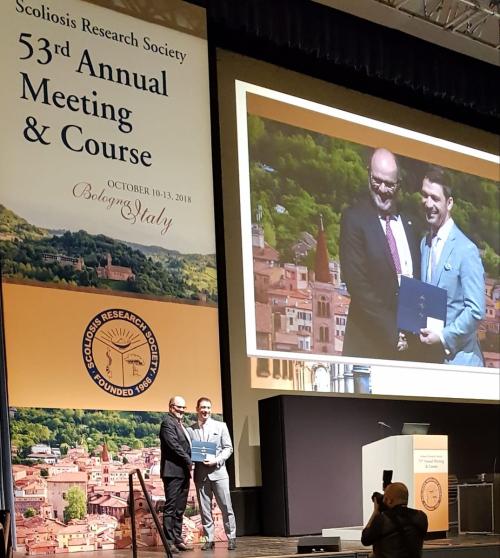Eurospine: a participant’s comment
In September Isico attended the International Eurospine Congress in Barcelona. Dr. Francesca Di Felice presented a poster titled Adolescent idiopathic bracing success rates influenced by time in brace: Comparative effectiveness analysis of the BrAIST and ISICO cohorts, while Dr. Fabio Zaina delivered an oral presentation about the study, ISYQOL discriminates adolescents with spinal deformities subgroups better than the SRS-22 questionnaire.
The aim of Eurospine is to optimize patient care and prevention of spinal disorders, stimulating the exchange of knowledge and ideas in the field of research, prevention, and treatment of spine diseases. In recent years, the society, mostly represented by surgeons, has offered different surgical courses, but a novel development has occurred in Barcelona with the birth of Non-Surgical Interprofessional Courses: the EUROSPINE Diploma in Interprofessional Spine Care (EDISC). The non-surgical task force includes Dr. Fabio Zaina as responsible of the module on spinal deformities.
“We want to underline the great value in the field of research of Prof. Martin E. Schwab ‘s Medal Lecture at the conference: New therapies to repair the neuronal hardware and improve functional recovery after spinal cord injury,” says Dr. Di Felice. “Prof Schwab presented a clinical trial for anti-Nogo-A in acute spinal cord injury, promising in the rehabilitation of spinal cord injury (SCI). Nogo A is a suppressor of nerve fiber growth in the adult central nervous system (CNS); neutralization of Nogo-A by antibodies after CNS injury allows the enhancement of long-distance regeneration of injured fibers, the stimulation of compensatory fiber growth by speared systems, and a functional recovery.
An interesting topic has been the surgical symposium on Adolescent Spinal Deformities and Treatment Options in which the anterior surgery was debated. Anterior scoliosis correction and vertebral body tethering are examples of that: these techniques can be considered less invasive approaches compared to posterior surgery. The first one can also be used in curves over 65 degrees, stiff curves in mature adolescents and adults; the second one can be used in flexible curves less than 65 degrees in the growing spine”.




Leave a Reply
Want to join the discussion?Feel free to contribute!